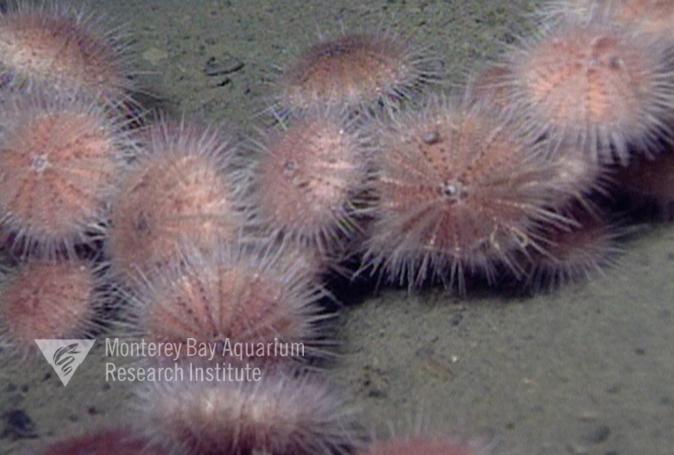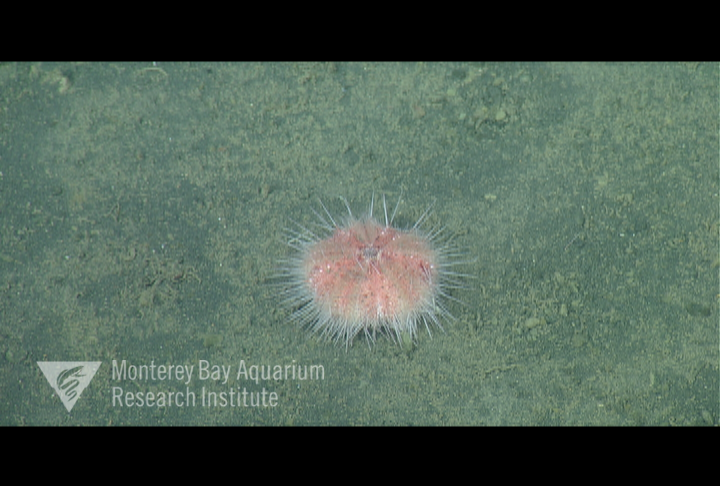Description
General:
Distinguished by its extremely thin test. The test is strongly depressed and flattened on the ventral surface. Spines are 10 to 20 mm long and light in color. Test color is reddish claret, though younger speciemans are orange-red in color.
Size:
To 94 mm diameter and 44 mm height.
Geographic Information
Habitat description:
Benthic, soft sediment.
Ocean range (global):
Northeast Pacific.
Published depth range:
227 - 620 m
Additional Information
Diet:
Plant and animal scraps.
Color:
Orange-red to red.
Key visual features:
For Monterey Bay, pink.
Other resources:
National General Status Working Group (2020). Standardized Common Names for Wild Species in Canada. www.wildspecies.ca. (Accessed 10/10/20)
References
Encyclopedia of LifeTree of Life
World Register of Marine Species
National Center for Biotechnology Information
Biermann, C.H., B.D. Kessing, and S.R. Palumbi (2003). Phylogeny and development of marine model species: strongylocentrotid sea urchins. Evolution and Development, 5: 360-371. http://dx.doi.org/10.1046/j.1525-142X.2003.03043.x
Jackson, R. T. (1912). Phylogeny of the Echini with a revision of Palaeozoic species. Memoirs of the Boston Society of Natural History, 7: 1-491.
Lambert, P. and W.C. Austin (2007). Brittle stars, sea urchins and feather stars of British Columbia, southeastern Alaska and Puget Sound. Victoria, Canada: Royal British Columbia Museum.
Citation:
Strongylocentrotus fragilis
(Jackson, 1912) Deep-Sea Guide (DSG) at http://dsg/mbari.org/dsg/view/concept/Strongylocentrotus%20fragilis. Monterey Bay Aquarium Research Institute (MBARI). Consulted on 2025-12-25.

 Click here for a larger image.
Click here for a larger image.
